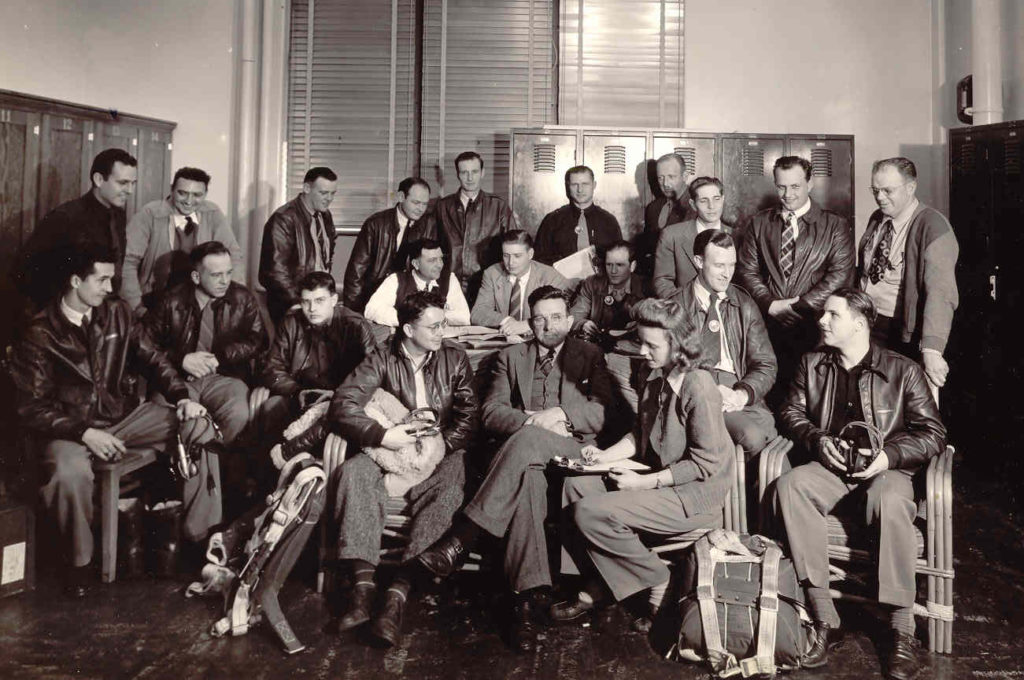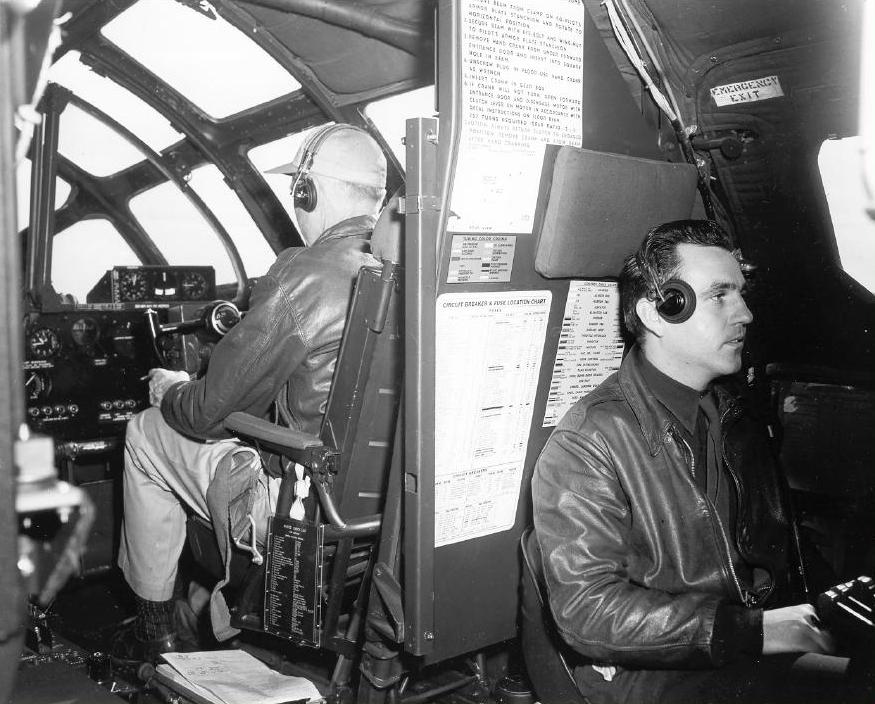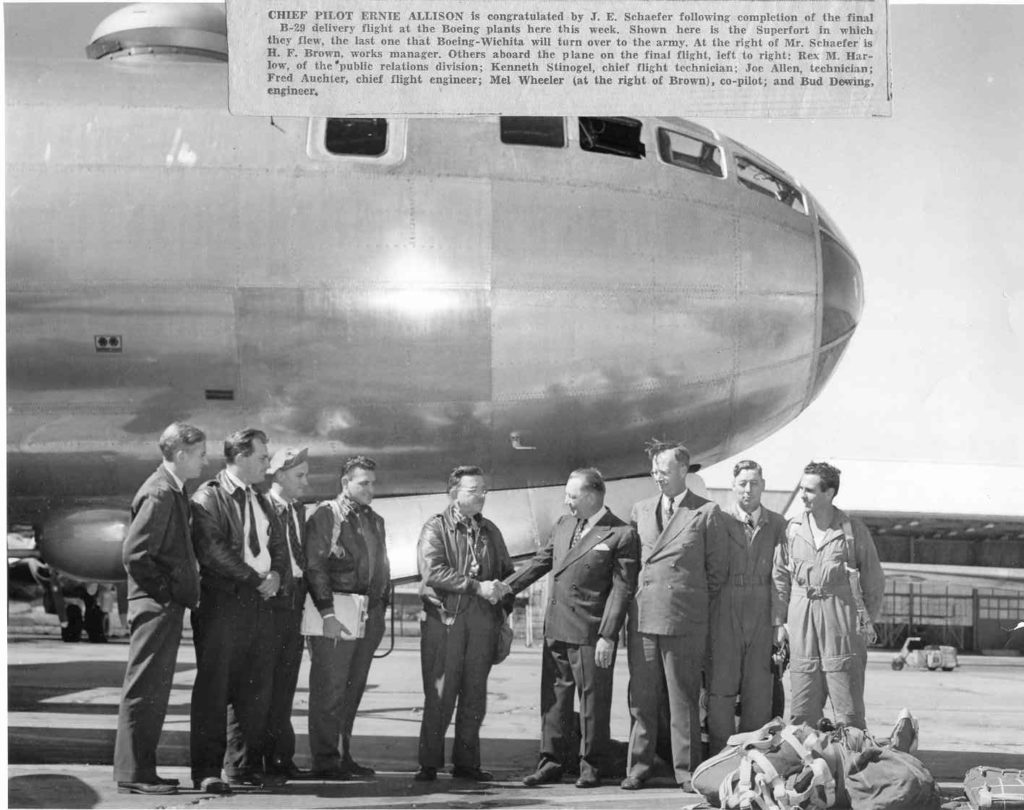Normally I share my own adventures, but today I’m excited to share one from my grandfather.
Testing B 29s on the Fly – Flying Superforts fresh from the assembly line could be a dangerous job
The following article was originally published by Aviation History magazine in 2011. I’m resharing it here because it happens that one of the B-29s my grandfather, Roy “Bud” Dewing, tested is coming to Albuquerque September 13-15 and I’m excited to see it and let Albuquerque know it will be here!

Copilot Norman Jacobshagen raised the alarm at the end of the three-hour rest flight. After flipping the switch to lower the B 29s landing gear, he called over the intercom, “Ken, the indicator light isn’t coming on.” Jacobshagen flicked the switch up and down again, then pilot Kenneth Nill tried the emergency landing gear switch. No response.
The flight engineer that day was my grandfather, Roy “Bud” Dewing. He recalled that each time they flipped the switch to drop the gear, he anticipated the sudden onset of drag that normally occurred whenever the big bomber’s 56-inch tires were lowered into the airstream. But despite repeated attempts to extend the gear, the feel of the aircraft never changed.
With the rest of the crew listening in, Nill radioed the tower and explained the problem. Tower personnel quickly confirmed that the B 29s landing gear was not down, adding that they would alert rescue crews and have them standing by. Nill would have to bring the 75,000-pound bomber in for a belly landing on a cement runway.
Dewing calculated the amount of fuel they needed to burn off before they tried to touch down, then instructed Nill to circle the airfield. The rest of the team, meanwhile, prepared for a dangerous landing.
Just a few months earlier, in November 1943, a bit of luck and a lot of elbow grease had landed 24-year-old Bud Dewing his job as a flight engineer at Boeing’s Wichita plant, working with the first B-29 flight test crews. His friend Fred Auchter had recommended him for the B 29 program, but Bud had to prove himself before he got the job. He spent months familiarizing himself with every dial and switch, answering questions on the fly from chief test pilot E.M. Allison and learning how to start the engines as well as keep them running efficiently.
Happy that his new job supported the war effort, Bud was eager to do even more. Years later, he recalled a day in February 1944 when he and his crewmates, along with another test crew, were hanging out in the lounge, listening to Glenn Miller on the radio while they waited for an aircraft to be readied. Harry Johnson and Deane Cunningham were playing table tennis when Roland Miller made a stirring speech about enlisting in the Army Air Corps and flying B-29s in the military theater, instead of just testing them in the States. Miller’s speech hit home for Bud, whose brother was serving overseas. That same day “Boo” Paschal, Cunningham, Miller, and Dewing headed downtown to the Army recruiting office.

“We’d like to sign up for the Army Air Corps, working with the B 29s,” Miller told the recruiter. Miller explained their training and all the hours they’d spent checking out the big bombers. Obviously they were well qualified, but the recruiter just shook his head.
“Son, if I sign any of you up, the Army, in its infinite wisdom will end up putting you in as cooks. You boys are better off exactly where you are.”
The Boeing employees left the recruiting office with mixed feelings. Bud was relieved because he’d be able to stay home with his wife and kids. But he was also disappointed to hear that the Army likely wouldn’t appreciate his talents if he enlisted.
Dewing was happy to continue flight-testing B-29s, however, a job that was doubly important with so many bombers that still needed work coming off the assembly lines. To complete its test run, each new airplane required 2 1/2 hours on its engines, three take-offs, and three landings. Any squawks (problems reported) had to be quickly resolved by the mechanics. Many bombers were delivered to the USAAF within days of assembly.
Engine overheating was a constant concern, but less so than in combat theaters since the test hops were short and they weren’t carrying any loads. There were some major surprises, like the time one test team reported seeing a “propeller fly off the airplane’s wing and hurtle toward the ground.” And then there was that memorable day when Bud and his team made a belly landing.
Dewing was sitting in the flight engineer’s position, facing the back of the plane, as they neared the runway. He watched through a small window as the ground rose up to meet them. Then he felt the big bomber’s nose pitch up, as Ken Nill pulled back on the yoke. After that, the sounds and sensations all collided. Bud felt the sudden loss of momentum as the B-29 slammed into the runway, pressing him into his seat. The propellers dug into the cement runway, and the aircraft skidded to a stop. He could hear the rescue vehicle sirens coming.
The next thing Bud knew, he and the rest of the crew had escaped out the emergency hatch and dropped to the ground. Quickly moving away from the bomber, they saw that its fuselage had been shredded. It was clear to everyone that Nill’s experience as a pilot had kept them alive that day.
At one point Dewing’s team also took part in a short-lived trial of midair refueling. It involved a technique conceived in England in the 1930s known as the looped-hose method. ON the receiving end of the fuel transfer, a B 29 crew harpooned out a rope that trailed behind the aircraft. At the end of the rope was a grapnel, as well as a small parachute meant to hold the rope as stead as possible. The refueling aircraft trailed its own rope, which was connected to a metal fuel transfer hose. When the two ropes joined up, a crewman in the receiving plane manually cranked the rope and hose in.
It turned out that the B 29s cruising speed – upwards of 200 mph – exerted too much stress on the hoses, which fractured during each refueling attempt. Sections as large as 40 to 50 feet would sometimes break away. Looking back on those experiments, Bud smiled as he commented, “I’m sure that farmers all over Wichita were scratching their heads, wondering where those doggone metal hoses were coming from.”
On another B 29 test flight, Deane Cunningham, who was serving as the pilot, went to take a nap in the tunnel that connected the cockpit fore and aft sections while Bud was at the controls, testing out the systems. Cunningham returned and stood behind Bud as they circled the runway, but he never asked for the controls. After so many flights in the engineer’s seat, Bud was thrilled to get a chance to land the big bomber. That flight inspired him to take pilot training, and within months he had obtained his private pilot’s license.
As the war came to an end, the flight test crews dwindled. Bud and the remaining crewmen realized their days with Boeing were numbered. On September 20, 1945, they tested their last B 29. Most stayed involved with aviation after that, some continuing with Boeing in other capacities.

Bud managed a gas station for a time before he took a security job at Los Alamos, N.M. During the Apollo missions, he worked for NASA in quality control, making sure that computer programs, space suits, and other gear functioned correctly. While with NASA, he even received the coveted Snoopy award for his work. He later worked for the Defense Atomic Support Agency, traveling around the world to inspect equipment.
My grandfather always appreciated a challenge. His experience with testing B 29s turned out to be just the beginning of a long and rewarding career. He enjoyed his life in Albuquerque, NM and his children, grandchildren, and great-grandchildren remember him as someone who was quick with a joke and always found a silver lining.
If you’re in Albuquerque, go check out the B 29 Doc Flight Experience & Ground Tours September 13-15.
I’m Sonja Dewing. I’m an award winning creative writer, a published author of Toy of the Gods (an adventure in the Amazon with top reviews) and other stories available on Amazon and I’m always seeking adventure. I’m a Social Media Manager and consult with writers on creativity and social media.
